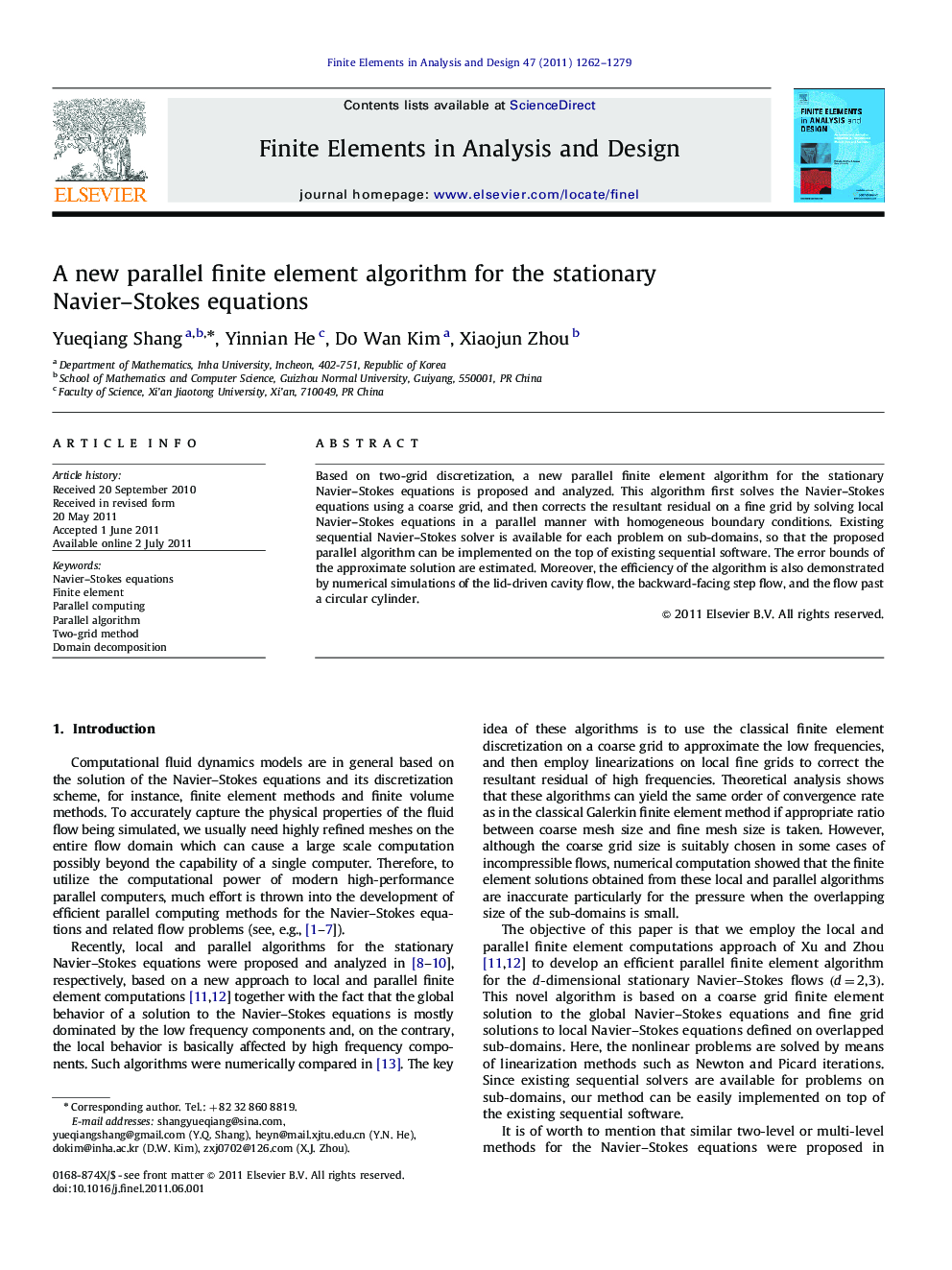| Article ID | Journal | Published Year | Pages | File Type |
|---|---|---|---|---|
| 514058 | Finite Elements in Analysis and Design | 2011 | 18 Pages |
Based on two-grid discretization, a new parallel finite element algorithm for the stationary Navier–Stokes equations is proposed and analyzed. This algorithm first solves the Navier–Stokes equations using a coarse grid, and then corrects the resultant residual on a fine grid by solving local Navier–Stokes equations in a parallel manner with homogeneous boundary conditions. Existing sequential Navier–Stokes solver is available for each problem on sub-domains, so that the proposed parallel algorithm can be implemented on the top of existing sequential software. The error bounds of the approximate solution are estimated. Moreover, the efficiency of the algorithm is also demonstrated by numerical simulations of the lid-driven cavity flow, the backward-facing step flow, and the flow past a circular cylinder.
► This paper proposed a new parallel finite algorithm for the Navier–Stokes equations. ► This new algorithm is easy to implement. ► It can reuse existing sequential software. ► This algorithm has low communication complexity. ► Numerical experiments demonstrated the high efficiency of the algorithm.
